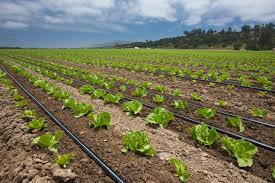Introduction
With climate change and water scarcity becoming global concerns, sustainable agricultural practices are more important than ever. One of the most effective solutions for conserving water while improving crop yield is drip irrigation. Unlike traditional irrigation systems, which often lead to water wastage and inefficient plant hydration, drip irrigation delivers water directly to the plant roots, ensuring maximum absorption and minimal evaporation. This makes it an essential technique for farmers, gardeners, and agricultural professionals looking to enhance productivity while preserving natural resources.
What is Drip Irrigation?
Drip irrigation is a modern watering method that provides plants with a slow, steady supply of water through a network of tubes, valves, and emitters. This system ensures that water reaches the roots efficiently, reducing evaporation and runoff compared to other irrigation systems.
Benefits of Drip Irrigation Systems
- Water Efficiency – Reduces water usage by up to 70% compared to traditional methods.
- Better Plant Health – Ensures uniform moisture levels, reducing stress on crops.
- Prevents Soil Erosion – Unlike sprinkler irrigation systems, drip irrigation delivers water without disturbing the soil structure.
- Minimized Weed Growth – By targeting plant roots, weeds receive less water, limiting their growth.
- Energy and Cost Savings – Reduces electricity and water costs for farmers.
How to Set Up a Drip Irrigation System
Installing a drip irrigation system is a simple yet effective way to optimize water usage. Here’s how to get started:
1. Plan the System Layout
- Identify the crops or plants that need watering.
- Determine the placement of tubing and emitters for efficient water distribution.
2. Choose the Right Equipment
- Use high-quality tubing, emitters, and connectors.
- Install a water filtration system to prevent clogs in the drip lines.
3. Install the Tubing and Emitters
- Lay the tubing along plant rows, ensuring proper spacing.
- Attach emitters at each plant base for precise water delivery.
4. Connect to a Water Source
- Link your drip watering system to a water supply, such as a tank or pipeline.
- Install a pressure regulator to maintain a steady flow.
5. Test and Maintain the System
- Check for leaks and clogs regularly.
- Clean filters and flush out the system to maintain efficiency.
Drip Irrigation vs. Irrigation Sprinkler System
Choosing the right irrigation system depends on your watering needs. Here’s how drip irrigation compares to an irrigation sprinkler system:
Drip Irrigation System:
✔️ Direct water delivery to plant roots reduces evaporation.
✔️ Requires water filtration to prevent clogging.
✔️ Ideal for row crops, greenhouses, and home gardens.
Irrigation Sprinkler System:
✔️ Covers large areas using overhead water distribution.
✔️ Best suited for landscape irrigation and lawns.
✔️ Requires a water sprinkler for garden setup with high water pressure.
Using Sprinkler Irrigation Systems for Large-Scale Farming
While drip irrigation is ideal for targeted watering, an irrigation sprinkler system is a better choice for covering large agricultural fields. Sprinkler irrigation systems can be automated, reducing manual labor and ensuring even water distribution.
Types of Sprinkler Irrigation Systems:
- Rotary Sprinklers – Cover large areas with rotating water sprays.
- Fixed Spray Sprinklers – Best for small garden beds and landscapes.
- Drip-Spray Combination – Offers both direct root hydration and overhead watering.
Enhancing Water Management with Drainage Systems
A well-designed irrigation system should include proper drainage systems to prevent overwatering and root diseases. Drainage systems help redirect excess water away from crops, ensuring optimal soil conditions. Whether using drip irrigation or sprinkler irrigation systems, integrating a drainage plan will improve water efficiency and plant health.
Conclusion
Sustainable farming starts with smart water management. Whether using a drip irrigation system for precise watering or an irrigation sprinkler system for larger areas, both methods contribute to water conservation and improved crop yields. For farmers and gardeners working in a green house, drip irrigation provides controlled hydration, ensuring optimal plant growth. By adopting modern irrigation systems, agricultural professionals can enhance productivity while reducing water waste, leading to a more sustainable future.
